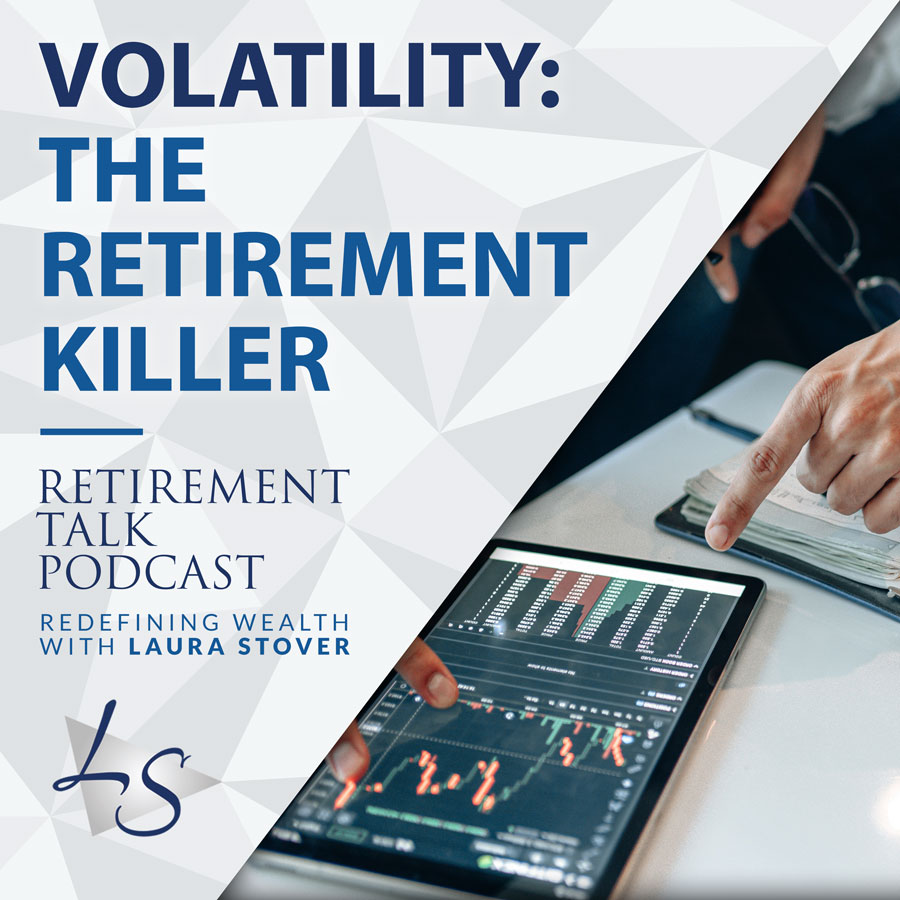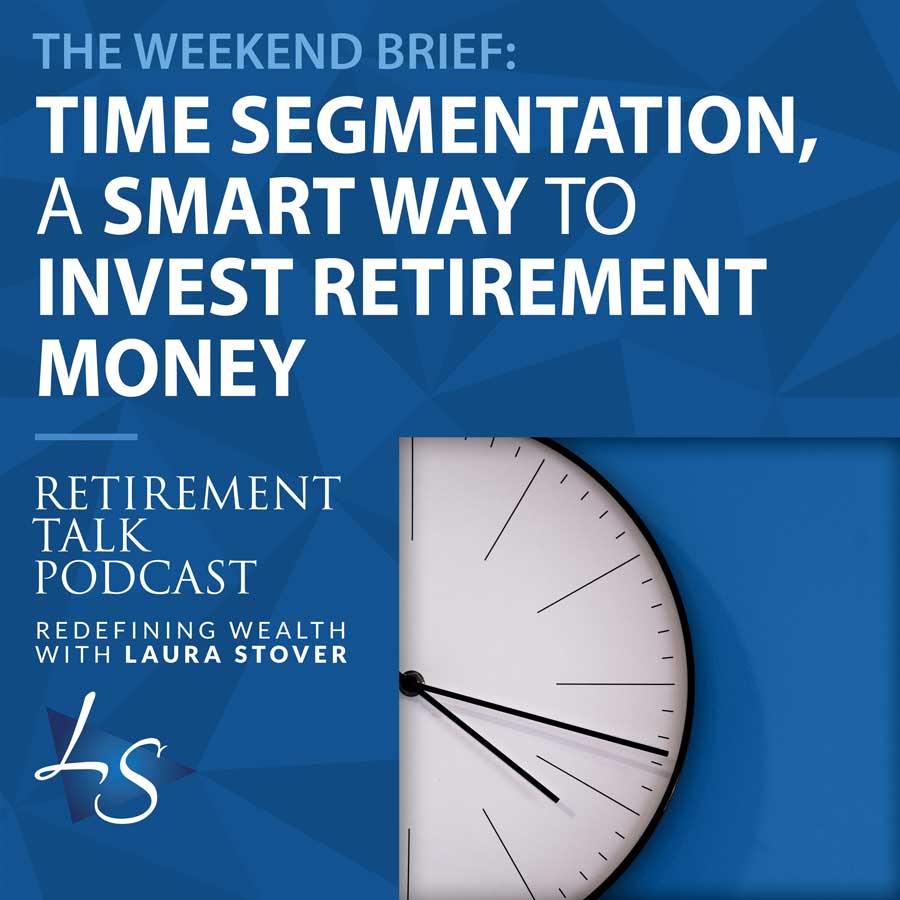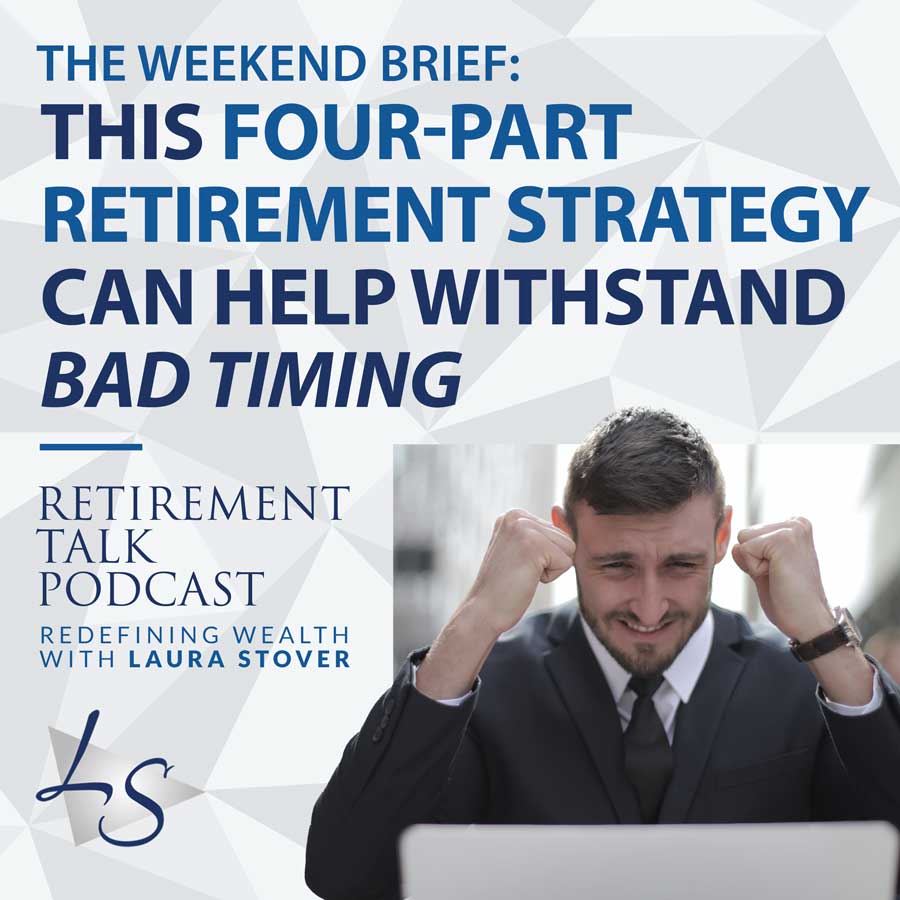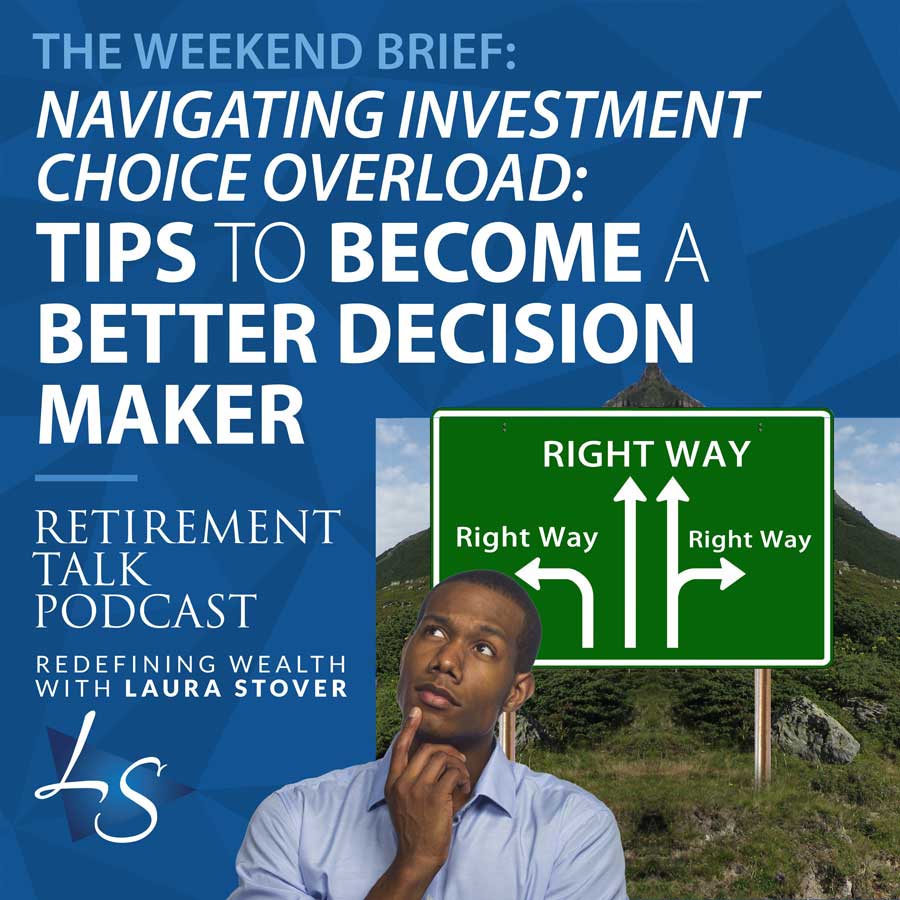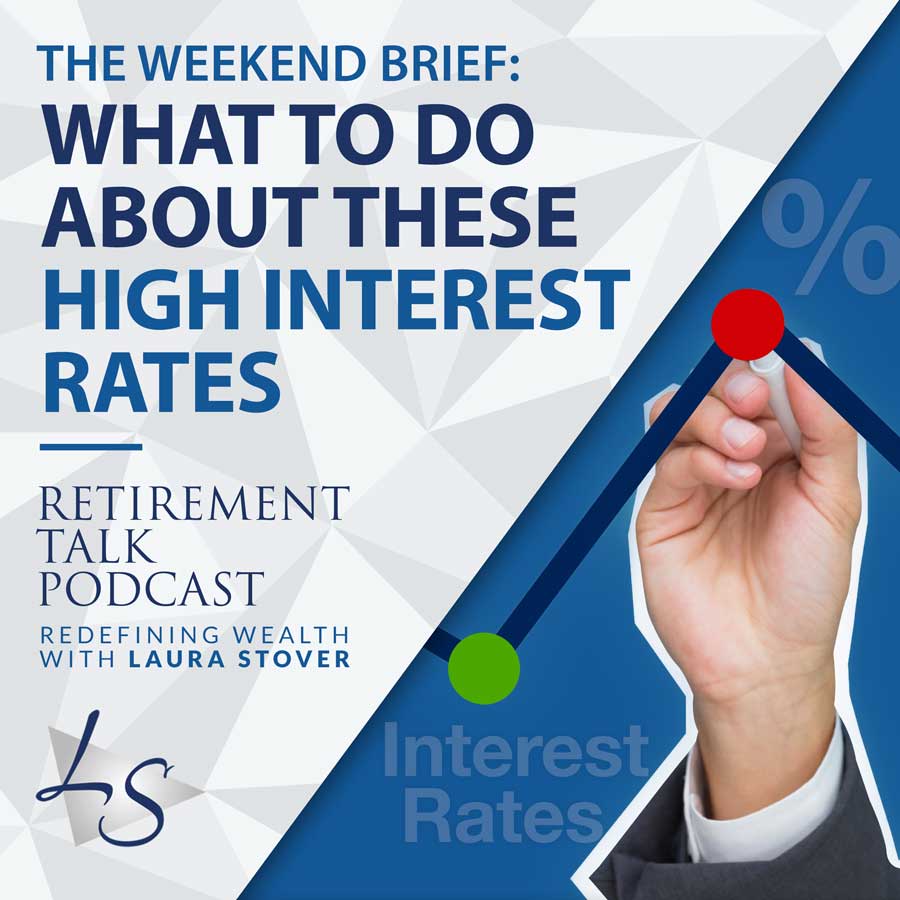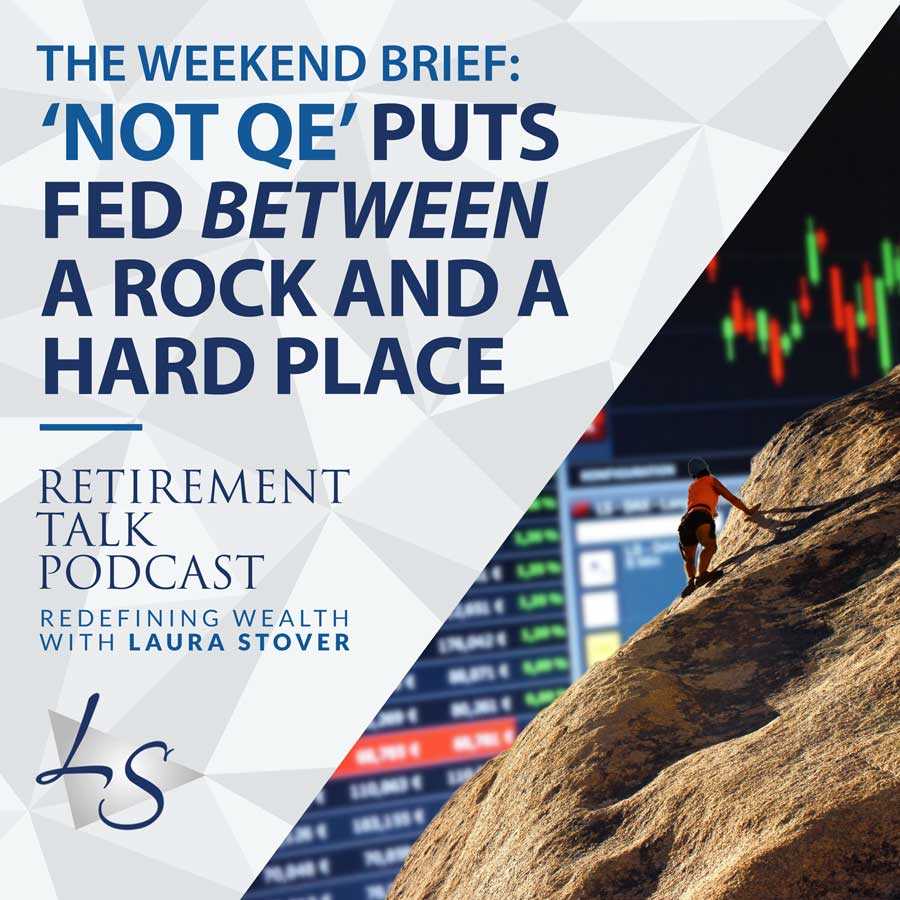January ended up being a pretty volatile month in the market. With inflation, geopolitical tension, and rising interest rates we may see more volatility in the near future. What is the danger this poses to our retirement? A fear of outliving your money coupled with recency bias can lead to an unbalanced portfolio. Portfolio failure, running out of money in retirement, is directly related to volatility. However, there are tools and strategies to navigate a choppy market.
Think of standard deviation as a relative risk rating. Lower standard deviation means lower risk or volatility. Using a Monte Carlo simulation spreadsheet, we can forecast the probability of potential failure rates. We have to examine how much risk you are taking in relation to the return you need for a successful retirement. You want to build a plan with the highest probability of success.
How could you still go broke in your portfolio with a 20% return?
If we have two portfolios and put a million in each:
Say Portfolio A made 60% the first year or $1.6 million. In year 2 we lost 40% and our previous $1.6 million is now a net of $960,000.
Portfolio B made 30% in the first year or $1.3 million. In year 2 if we lose 10% our $1.3 million now has is a net of $1,170,000.
Dividing both of these portfolios over 2 years, both portfolios average a 10% return but Portfolio B has more money in it with a gross increase of $210,000. This shows, you could have two portfolios with the same return, but the lower volatility portfolio could mean the difference between success and failure in retirement. Join us as we evaluate standard deviation, the traditional 60/40 portfolio, the benefits of lower volatility portfolios, and more on today’s show.
Email [email protected] for your guide and report on defending yourself against a bear market.
Complementary portfolio stress test: https://redefiningwealth.info/schedule/
Review the article mentioned in today’s show >>
Rate & Review and Subscribe to the Podcast:
https://podcasts.apple.com/us/podcast/retirement-talk-podcast-with-laura-stover/id571347188
Links
Schedule a Review: https://redefiningwealth.info/schedule/
Timestamps (show notes):
2:23 – January began volatile, inflation, geopolitical tension
8:32 – Lower standard deviation means lower risk
16:24 – How could you get a 20% return and still go broke?
20:21 – Triple compounding and reverse and preservation income
22:11 – Why the 60/40 portfolio could bring losses
25:58 – Losses with a 40% underperforming portfolio
Listen & Subscribe
Review the Transcript:
Ron Stokes:
Welcome to Retirement Talk, the Redefining Wealth Show, your source for financial information specifically for pre-retirees and retirees. They’re here each and every week to help you better navigate during these economic times. We’re here to discuss thoughts and ideas in the field of finance and retirement, as well as discuss trending topics that can impact your bottom line. We’ll break it all down. These discussions can help you make better informed decisions so you can make better financial choices and live the lifestyle you imagined for retirement. Laura Stover is a registered financial consultant and CEO of LS Wealth Management, as well as founder and owner of LS Tax, a consulting firm. She’s been featured in Forbes, CNBC and The Wall Street Journal. I’m Ron Stokes. Our topic for today is The Retirement Killer, the volatility from Forbes. Now, here are your hosts, Laura Stover along with certified financial planner, Michael Wallin.
Laura Stover:
Hello, hello, hello Michael. How are you today?
Michael Wallin:
I am doing. Hello, Laura. Great to be here with you today. I know you’ve got a great show planned for us, so looking forward to going through the material.
Laura Stover:
Well, I’ll tell you what. We had a fantastic webinar with a filled room. I don’t know if there’s a limit in the cyber world to an audience, but it was so good to connect with people. And if you want to stay on our list, make sure you go to redefiningwealth.info to stay in touch with us. We bring you basically the podcast live and we had some great speakers, good music. I mean, as much fun as you could have in a virtual webinar, but everyone has questions, Michael. And that’s why I like this topic because I think it’s important to a lot of people. We saw the beginning of the year, we’re already at the time of love in the season. You know, we’re in February around Valentine’s day and January had the jitters, the jitter bug. I’m in just that mood today from no sleep.
Laura Stover:
And I was at the gym very early this morning. So you don’t know what I’m going to say here on today’s show, but January began very volatile. And I know a lot of people have concerns. We are at what, seven and a half percent inflation. It’s still peaking. Unfortunately, it’s going to go higher. The average American family is paying on average $276 more a month right now. It is costing people more money to put food on the table, gas in the car. I can’t see this not evolving with the geopolitical concerns in terms of Russian troops, why would they have over a 100,000 there if they’re not going to do something? So let’s be realists here. They’re not afraid of our sanctions. They’re not afraid of doing what they want to do. And we know the price of oil is going to continue to escalate, which is going to translate to much higher gas prices coupled with the very, very high inflation, the highest we’ve seen in 40 years.
Laura Stover:
And then if we take all of that and mix it in with the Fed now aggressively, he’s going to start raising interest rates. It’s going to whack middle America every which way, upside down and all around. And that’s just part of the market’s reaction, I think, to all of this uncertainty and what it was reacting to in January. So our discussion today is about volatility. I think this is a timely discussion and actually some of the content came from some years ago. It’s relevant still today, because portfolio failure, meaning if you run out of money during retirement, that is directly related to volatility. And as volatility goes up, that expected failure rate of a portfolio taxed with making the withdrawal that you’re going to need for income, it rises almost exponentially. So unfortunately, I think Mike, too many retirees just don’t appreciate the link between portfolio volatility and running out of money while they’re still alive.
Laura Stover:
And now we kind of have these black swan events going on and over time, if people don’t have the right balance, we talk about this all of the time, and then maybe they’re taking more risk than what they realize. And it’s a really good time to examine volatility. So let’s just, as you would say, unpack this because a lot of people focus on expected average rates of return. They know the market goes out up, it goes down and sideways, but let’s put it into perspective. You’ve got to have volatility intact overall, when you are trying to protect your capital, nearing retirement, there’s a fine line having assets continue to grow, but managing the volatility.
Michael Wallin:
Well, I think you hit on it right there, Laura, with the emotional dynamics. So many individuals are looking at their overall portfolio as one bucket of money. But the emotional dynamic that really drives this is that underlying fear of outliving one’s funds, outliving one’s resources. That has become, and we’ve seen research over the last 10 years, that when these surveys are run, the number one fear, the number one concern of retirees is outliving their money. That is higher than death. They are more concerned about outliving their money than they are about actually dying. And so that coupled with recency bias often times gets individuals into an unbalanced portfolio. Over the last three years, we’ve seen 25% returns in the S&P 500. So when you’re looking at these exorbitant returns that are being driven, everybody all of a sudden starts believing that becomes the normal.
Michael Wallin:
And like last night when we were on the call and we had our research firm sharing a lot of this data, they were talking about what happened to the mindset that a 9% average rate of return was the standard. Now we’ve got individuals thinking that if they’re not making 25%, then the advisor’s doing something wrong. Well, the reality is that was abnormal, the 9% is what is normal. But we have to look at the probability, how much risk is being applied the portfolio? And then if we increase the amount of volatility, because low volatility is basically money under your bed in a box with zero risk, you’re not going to make anything, you’re not going to lose anything, but with inflation, you are going to lose buying power. So we’ve got to expose our money to some level of risk to outperform inflation, to keep up with that buying power in the future so we get into standard deviation.
Michael Wallin:
That’s a metrics that we look at and we start calculating to say, the more we risk, what is the increased failure rate upon that portfolio? So there’s a balance. And like you said, it’s really designing a plan that comes back, that divides the funds out into buckets. And those buckets, if it’s money you’re going to use in zero to 3%, our philosophy is reduce your amount of risk exposure there because you have less time for recovery. But over on the other side, if it’s money you’re not going to use for 15 years, you can absorb a larger amount of risk because you have a recovery time that’s built into that time horizon. So again, it’s having a plan and it’s also having a plan for your emotions.
Laura Stover:
So with that thought, now let’s break that down, unpack that. Almost all advisors define portfolio risk or volatility as you stated, with standard deviation. We get to use some of our big verbiage here today, Mikey, and without getting into that math, breaking this down for our followers and listeners, you can think of standard deviation as a relative risk rating. So lower standard deviation equals lower volatility or lower risk. Now in the absence of a perfect crystal ball, we have to guesstimate both future portfolio risk and returns based on past performance. We’re always looking in that rear view mirror. That’s the only gauge that we can really determine expectations around a portfolio. So using these guesstimates, we can forecast the probability of potential failure rates using a simple spread sheet simulation called a Monte Carlo Analysis. Now, this is common in our industry. It’s a very neat tool to help us evaluate.
Laura Stover:
And it’s talking about outcomes, probabilities, various possible strategies. And if you kind of compare this like any other computer tool, it’s subject to the garbage in and garbage out rule. So we just ask the computer to construct a random pool of numbers, approximating a given rate of return, a given standard deviation. And when we ask that computer to draw numbers from that pool randomly to simulate a single future theoretical type of return sequence, then we ask it to do it again like a thousand or 10,000 times to see what the final distribution of failure rates might look like. Even primitive laptops can do it in the blink of an eye. So why it’s important? Because the test using a pool of numbers with an average 10% rate of return, but then if you have a standard deviation of 10% or 15 or 20, and then you have to look at the withdrawal rate, that’s kind of what this article’s breaking down.
Laura Stover:
If you’re withdrawing 6% per year, but your standard deviations 10 or 15 or 20, if there’s no volatility, if there’s no volatility, then this story would always have a happy ending, right? But you could take out more than what most financial advisors deem prudent every year and your account would grow by about 4%. And you would never face the prospect of depleting the account or running out of money. That’s really kind of the crux of when we’re talking about standard deviation, we’re talking about what is the probability of your portfolios success or failure over time?
Laura Stover:
I really like to look at what’s called the beta, which is a measurement of risks. And I think the important thing from all of this verbiage Michael, people have to examine how much risk are you taking for the return that you need to be successful in retirement, or when you’re forced to take income out of the account, or you need the income on withdrawal rate. And this is where inputting this data into our life arc system, that is crucial because I don’t want to chance everything to a Monte Carlo simulation and just be a number in a computer system. That’s people’s livelihoods, that’s their retirement accounts. So let’s unpack what I just kind of explained there, because we’re talking about sustainability of people’s retirement accounts and the number they need to be successful. How much risk are you taking in the portfolio?
Michael Wallin:
Yeah, I mean, I think it’s a measurement. You know, we look at individuals out there that, and you’ve heard me say this so many times, it’s they live on the island of financial independence, and that’s a unique location for you to have your home. And if you’re out there and you’re living on that island of financial independence and you can buy a U.S. Treasury, which is the risk free rate of return, and it yields you enough income to be able to live the lifestyle that you want to live with no exposure of failure, no exposure. That’s a hundred percent probability of success.
Michael Wallin:
The reality is most people are not in that one-half of 1% of the population that can live there. And so as you start moving down that ladder, you start moving out of that neighborhood into the neighborhoods around it, or even into the state next door to it. You know, the further you get away from the island of financial independence, the more risk you have to have exposed onto your portfolio. And so as you look at that, there’s an acceptable level of failure. I happen to have worked for a company that in 2008, my 401k became not even a 201k, it didn’t become a 101k, it disappeared because the company I worked for at that time, absolutely imploded. Our stock price had went from $115, a share to $2.20 a share there about and so…
Laura Stover:
We won’t talk about the arrogant, ignorant and greedy company. People can figure what that synonym means.
Michael Wallin:
But you know, you get into those and I looked at my 401k, I don’t have the luxury of not having risk in my portfolio, even if I was conservative, I don’t have the luxury of being conservative. I had to be ultra aggressive because I had to try to make up time and time was something I could not dial back. And so, because of that, I’m exposed due to looking at that standard deviation. There’s a possibility that there’d be a 30% failure rate. Now, is that something that is palatable? It’s not something that I want, but I’m trying to achieve a growth number, an account value that I can then dial back my risk and it can then take me through those retirement years.
Michael Wallin:
But again, it comes into really identifying a plan, laying out that information, and then looking at your standard deviation, looking at your beta. Is the amount of risk, is the amount of failure possibility, is that palatable? And if it’s not, you really have to go back and look at your budget and say, this lifestyle that I’ve always dreamed of living, if that amount of risk is not acceptable to me, maybe I have to dial back my expectations. Maybe I have to put more money aside. Maybe I have to work two or three years longer. There are things that can happen. You’re not painted into a corner without any opportunities, but you have to build a plan with the highest probability of success.
Laura Stover:
Well, when we come back after the real quick break, I want to talk about why a 20% return you could still go broke in your portfolio, and how the 60/40 asset allocation of the past has really kind of become obsolete. And we’re going to break that all down when we come back. You’re listening to Retirement Talk, the Redefining Wealth show with Laura Stover and Michael Wallin.
Ron Stokes:
You’re listening to Retirement Talk with your hosts, Laura Stover and Michael Wallin. To learn more about how we can help you redefine your wealth, receive a complimentary copy of our guide on how to defend against the bear market, email [email protected] if you’d like to make sure you’re on the right financial track and to take this a step further, go to redefiningwealth.info and schedule a 15 minute strategy review to talk more about your unique situation, redefiningwealth.info, that’s redefiningwealth.info. You’ll also be able to get access to today’s show notes. Now, back to Retirement Talk, the Redefining Wealth show with your host, Laura Stover.
Laura Stover:
So right before the quick little break there, I said, you could essentially make 20% and still lose dollars in your portfolio. Well, how has that happened? Because percentages and dollars are two different things. So let’s imagine we have two portfolios and the first year portfolio A, we’ll call it, gets 60%. Because people are chasing some of these meme stocks, AMC, maybe they’re into Cathie Wood stuff, whatever you like, Facebook, whatever the stock is, it returns 60%. You are a rock star. You can brag to your friends. And let’s just say, portfolio B, earns 30%. Mike, help me keep track of the numbers here. So 60%, 30%, well, obviously the 60% sounds like the way to go. Well, let’s just see, because this is about averages. So year two. Oh, you were great the first year, but now you’re 60%. You lost 40 the next year.
Laura Stover:
You’re not quite as smart as you thought, but you still came out all right. And the second portfolio B, we’re down 10. If we take the number 40 from 60, and 10 from 30, and we divide that over two years, the average return it was 20. And then the average return for both is what? 10%, am I doing my math right in my head here.
Michael Wallin:
That’s right.
Laura Stover:
Both portfolios have 10. Now let’s put a million dollars in each portfolio and you can write with a pencil and help me keep track of the math because I have no calculator at all in front of me here, doing this live. A million dollars in each portfolio. So the first year portfolio, we made 60% the first year. So that’s 1.6 million. Now year two in portfolio A, we lose 40%. So now our 1.6 million is a net of…
Michael Wallin:
960,000.
Laura Stover:
Okay. 960, keep that number. Now, portfolio B, we have 1.3 million because we made 30% year one, then year two, we lose 10% of 1.3 million. So our net dollars is…
Michael Wallin:
1,170,000.
Laura Stover:
Now what was portfolio A?
Michael Wallin:
960,000.
Laura Stover:
So divide over two years, both portfolios averaged 10% return, but which one has more dollars in it?
Michael Wallin:
Portfolio B.
Laura Stover:
And how many more dollars are in portfolio B than portfolio one, and they’re the same average return of 10?
Michael Wallin:
You are grossing an increase of $210,000 in portfolio B.
Laura Stover:
That’s my certified financial planner and I’m putting him to work the old fashioned way with pencil on paper. How much was that? $210,000 more in portfolio B. You sound like Einstein in their calculating all of the numbers. Thank you. But that’s what we’re talking about. That is the difference between success and failure in retirement. You can have two portfolios essentially with the same return, 10% was the same average return over the course of two years for both portfolios, but the lower volatility portfolio, you don’t have to have as big highs, but avoiding those lows, losses count more than gains. If this is a crucial component to the mythology and philosophy in terms of how we invest and what the goal is in terms of having a reasonable expectation in determining the return that you need to have to be successful. I cannot emphasize that enough. And I hope that simple calculation, we’ll put that in the show notes today so that you can see the math wrote out. And thanks for doing that on the spot, Michael.
Michael Wallin:
Oh, you’re welcome.
Laura Stover:
That amazingly. That’s huge.
Michael Wallin:
Well, it is. And you know, that’s on an account that an individual’s not taking money out of. You know, if we really want to show some really bad numbers, make that a qualified account for an individual that has forced RMDs and they’re taking their RMD out of an account that had a 40% drop. When you’re taking that, that is a triple compounding in reverse. And that’s what we typically see when individuals go into the retirement years and they stay in the accumulation mindset versus shifting to a preservation income mindset and they leave their income distribution coming out of an equity portfolio and we see a downdraft in the market. You get the triple compounding in reverse. And oftentimes that is irreparable. That is a situation we saw for a lot of individuals in 2000, 2001. We saw that again in 2008, and even for individuals in 2015, 2018, where we saw those downdrafts that were not as big as what we saw in 08 and 01, but if you’re adding an extra five, six, 7% loss in your portfolio on a 5% distribution, and then you throw a 7% inflation increase on expenditures.
Laura Stover:
Yeah.
Michael Wallin:
So your people are taking more money out of their portfolios. That is what we get into longevity risk and the probability of their portfolio lasting because of the way they’re structured, reduces greatly.
Laura Stover:
Well, you can have a fairly sizable nest egg in that analogy be invested wrong, and it’s not just adding more bonds. Bonds, how well did they do in 21 Michael? Bonds did terrible. I mean this was a bad year for bonds. 2019, they had glorious returns. And so that’s huge.
Michael Wallin:
Well, the bond, usually in the equity side of the market, of equity start contracting, we see some tightening, consumer confidence reducing, we see that money flow over to the bonds. But the problem that we’re seeing is bonds are leading the equities to the bottom of the pond. I mean, there’s not a solution there, and now that we’re even hearing that they’re getting so much more aggressive on this hawkish approach of what we’re going to do on interest rates. You know, instead of it being a 25 basis point increase, we’re hearing as much as a hundred basis points of increasing the yields right now. And if interest rates go up by that to offset inflation, that is going to impact families. That goes straight to the bottom dollar of what they have in disposable income.
Laura Stover:
That is exactly why the traditional 60/40 portfolio can bring massive losses. And one of our esteemed money managers I know was recently on CNBC and he discussed this because it’s typically static, 60% equity, 40% bonds. And as rising yields led by higher inflation expectations, that’s going to reduce the market price and consider any a hundred basis point increase in long term bond yields, that leads to about a 10% fall in the market price. That’s a very sharp loss. So investing for retirement, it’s crucial to building a nest egg that can provide financial security in your latter years. And unfortunately, many people who are investing are really just making a big mistake with the money they’re saving for the future. In fact, a recent research piece from Fidelity found around a quarter of all employees who are invested in workplace retirement accounts, they’re taking way more risk than they should.
Laura Stover:
But when you think about it, your dollar cost averaging, your employer is chipping in maybe a match or a percentage, so if the market goes down and you have a time horizon, that works, but you’ve got to change that mindset as you approach retirement or you’re in retirement. If you don’t, then you end up in the situation with the math that we just went through right out of the break, where you could have a good average return and see a big part of the dollars within the portfolio diminish. And let’s face it, on average people are living much, much longer today. This is why these risks we’ve identified, really six key risk for retirees.
Laura Stover:
And it’s essential to have a framework and a process to make sure there’s coordination for income, for taxes, for healthcare costs, for estate, for the liquidity that you’re going to need and for the investment management. And so many people just kind of get into products or they’re shifting into assets they think have less risk when the reality is it’s a static composite. There’s no risk off mechanisms built into the portfolio. And I think that’s just a crucial misstep still in this day and age, most people, that’s a new concept for a lot of people.
Michael Wallin:
Laura, I agree totally with you 60/40 portfolios, oftentimes clients come in and they’ll sit down and I’ll look at the constructs of the investment philosophy that they’ve currently been using or using for the last 10 years. And I calculate very quickly, how much money did you lose over the last 10 years with having 40% of your portfolio underperforming? And you know, when you look at that, it’s like running a race carrying a piano on your back, who wants to carry the weight of that. And I’m not saying that for some individuals out there, 60/40, over a long haul, if you are a strategic investor, a 60/40 probably is the right thing for you. But you know, if you look at tactical management, what we’re looking to do is skate to where the puck is going to be. We’re looking at probability and looking at momentum investing, and we don’t want 40% of our portfolio that is underperforming, or even when the equity markets are positive, we don’t want the bond portion of the portfolio to be negative.
Michael Wallin:
You know, it’s not even like they were complimenting and yielding a positive. A lot of these ETFs or these portfolios were yielding a negative return. And so it was actually counterproductive. So again, I think it begins with understanding how much rate of return do you need to have your portfolio to be successful throughout your retirement years, and then backing into how much exposure do you need to have out of the equity markets. And there’s a difference between the value investing and the growth investing. And that’s where I think a lot of the allocation and balance can take place, but also looking at these companies that pay good strong dividends, and there’s nothing wrong with a bond portfolio, as long as it is something that is complimentary.
Michael Wallin:
For high net worth individuals, the municipal bonds may be a great position because of their high tax bracket and we’re getting favorable tax provisions off of that. So there’re areas like you said, you have to look at all the facets of a person’s life. No one is a single dimension individual, it’s multidimensional. So you have to look at all of those aspects to make sure that you have a comprehensive plan that will give you the highest probability as you go through your retirement years. And if you’re working with somebody that is simply finding a way to get you into the market and they are not truly helping you understand the metrics behind your portfolios, it may be time to have a second opinion.
Laura Stover:
Well, absolutely and understand the amount of risk you’re taking and why. We offer what’s called a stress test. It’s just like it sounds, physically a person gets on a treadmill. I did this for my physical and I didn’t like it because she pushed me really hard, but that’s what we’re going to do. And we’re going to examine the portfolio. We’re going to look back over the last five years, three years, we’re not cherry picking times, but it’s a regression analysis that’s going to take all of the various data that we’ve had in the market and the economy over that course of time. And what is the draw down? What is the beta? What is the amount of risk you’re taking for the return that is being received? This is important information to understand at the very least, you’re going to have a more clear and better understanding of risk.
Laura Stover:
I think that’s something we do do a good job on, and that we take a lot of time explaining to people. Asset allocation is over 92.6%, as far as the success of the portfolio. There’re other tools, hedging tools, there’s other asset allocation that people often aren’t taking advantage of within the proper portfolio construction overall. But the most important thing, I mean that we covered were today Michael, you can have a 10% return and still lose money in your portfolio. It’s about the dollars and preserving the capital and having consistency of return that matters in retirement. You’re listening to Retirement Talk, if you would like a copy of the bear market report that we have, go to redefiningwealth.info and request the bear market report. And we’ll make sure we get that out to you or email info, I N F O [email protected]
Ron Stokes:
Take advantage of a complimentary portfolio stress test. Find out how much risk you have in your portfolio. To determine the appropriate number you need to be successful, schedule a portfolio stress test by going to redefiningwealth.info. Click review, you can have this information in the comfort of your own home. Redefining Wealth is a registered trademark of LS Wealth Management. Take advantage of a complimentary plan, know where you stand regardless of the market, walk through the redefining wealth process and have a clear picture of the key risk you likely will face and achieve a deeper understanding of how to properly plan for these risks with the Redefining Wealth framework. Schedule a strategy session now by going to redefiningwealth.info and click schedule.
Ron Stokes:
Redefining wealth as a registered trademark of LS Wealth Management. Investing involves risk, including the potential loss of principle, any references to protection, safety, or lifetime income generally referred to fixed insurance products, never securities or investments. Insurance guarantees are backed by the financial strength and claims paying abilities of the issuing carrier. This show is intended for informational purposes only, it is not intended used as a sole basis for financial decisions, nor should it be construed as advice designed to meet the particular needs of an individual’s situation. LS Wealth Management LLC is not permitted to offer and no statement made during this show shall constitute tax or legal advice. Our firm is not affiliated with or endorsed by the U.S. Government or any governmental agency. The information and opinions contained here in provided by third parties have been obtained from sources believed to be reliable, but accuracy and completeness cannot be guaranteed by LS Wealth Management, LLC. Investment advisory services offered through Optimize Advisory Services, SEC. Registered investment advisor LS Wealth Management is a separate entity.
